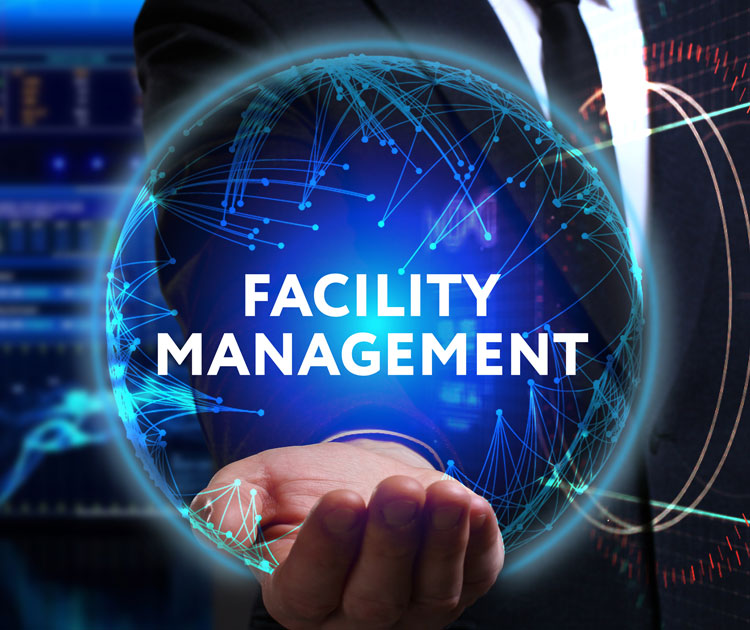How Total Facility Management Can Enhance Efficiency and Lower Costs
How Total Facility Management Can Enhance Efficiency and Lower Costs
Blog Article
Leading Advantages of Total Facility Management for Streamlined Operations
Total Facility Management (TFM) represents a strategic technique to boosting functional performance by integrating different solutions, such as upkeep and protection, under a unified management framework. The inquiry stays: what details advantages can organizations harness from taking on TFM, and how might these advantages change their functional landscape?
Boosted Operational Effectiveness
Boosted operational performance is a key benefit of carrying out total facility management (TFM) approaches. TFM incorporates a detailed method to handling a center's resources, processes, and facilities, ultimately improving procedures. By combining various solutions-- such as maintenance, space, safety, and cleaning management-- TFM reduces redundancies and enhances coordination amongst various functional functions.
The combination of technology further amplifies this efficiency. Advanced facility management systems provide real-time information analytics, allowing facility supervisors to make enlightened choices that improve process and source appropriation. Anticipating upkeep techniques, for instance, prepare for equipment failures before they occur, reducing downtime and expanding possession lifespan.
Furthermore, TFM advertises standard processes throughout numerous departments, making certain consistency and high quality in service distribution. This harmony minimizes operational disruptions and cultivates an extra collaborative functioning atmosphere. Consequently, employees can concentrate on their core responsibilities, driving productivity and improving general performance.

Expense Reduction and Savings
Executing total facility management (TFM) not only increases functional effectiveness however additionally considerably contributes to cost decrease and savings. By combining numerous services under a solitary management structure, organizations can eliminate redundancies and improve procedures, thus lowering functional expenses. TFM makes it possible for far better procurement strategies, allowing companies to discuss bulk investing in contracts with providers and company, causing reduced rates.
In addition, TFM highlights preventative maintenance, which minimizes unexpected break downs and prolongs the life expectancy of crucial tools. This proactive strategy not only decreases repair expenses yet additionally improves the reliability of facilitiess, making sure undisturbed procedures. Additionally, energy efficiency efforts, often a vital focus of TFM, cause considerable financial savings on energy expenses, as facilitiess are optimized for decreased energy consumption.
Improved Source Management
Effective resource management is a cornerstone of total facility management (TFM), making it possible for organizations to enhance the usage of their properties and labor force. By implementing TFM strategies, companies can comprehensively assess their source allowance, ensuring that every asset is made use of efficiently and successfully. This alternative method permits the recognition of underperforming sources and the potential for reallocation or enhancement.
On top of that, TFM helps with the integration of modern technology for real-time monitoring of resources, which assists in anticipating upkeep requirements and stopping expensive downtime. By leveraging information analytics, companies can make enlightened choices regarding resource implementation, ultimately improving efficiency and decreasing waste.
Moreover, TFM advertises a culture of constant improvement, motivating teams to frequently evaluate and fine-tune their resource management techniques. Total Facility Management. This aggressive position not just minimizes functional interruptions yet additionally promotes technology, as workers are empowered to suggest renovations based on their direct experiences with resource usage
Streamlined Interaction Channels
In total facility management, structured interaction channels play a critical duty in fostering partnership and performance across teams. Efficient communication makes certain that all stakeholders, consisting of facility managers, upkeep staff, and provider, are lined up with functional needs and business objectives. By establishing clear lines of interaction, teams can swiftly deal with problems, share updates, and implement solutions, thereby minimizing downtime and enhancing performance.
With systematized interaction systems, info is conveniently obtainable, permitting real-time updates on upkeep requests, resource allotment, and project timelines. This transparency not just reduces misunderstandings however also empowers workers to make enlightened choices rapidly. Structured communication facilitates much better coordination throughout emergencies, guaranteeing that all employees are informed and can react quickly.

Enhanced Emphasis on Core Activities
A vital benefit of total facility management is the boosted concentrate on core tasks, allowing companies to focus on their primary organization goals - Total Facility Management. By contracting out non-core features such as safety and security, cleaning, and upkeep, companies can reroute their resources and energy towards strategic campaigns that directly add to their affordable benefit and development
Total facility management incorporates numerous operational tasks under a solitary umbrella, cultivating performance and minimizing redundancy. This combination not only streamlines procedures yet additionally boosts responsibility, making certain that every aspect of the facility runs sympathetically without drawing away attention from what absolutely matters-- core organization functions.
Additionally, this approach allows employees to commit their effort and time to tasks that drive advancement and enhance client satisfaction, as opposed to obtaining bogged down by operational difficulties. With a reputable facility management partner handling day-to-day procedures, companies can achieve better agility, react swiftly to market changes, and preserve a sharper concentrate on their goal.
Inevitably, boosted concentrate on core activities results in improved general efficiency, allowing companies to reinforce their market placement and accomplish their critical objectives much more successfully. - Total Facility Management
Conclusion
Finally, Total Facility Management substantially boosts functional effectiveness by settling important services and leveraging data analytics for informed decision-making. Expense reductions and improved resource management add to total financial savings, while streamlined communication networks foster collaboration among stakeholders. By permitting companies to concentrate on core activities, TFM not only optimizes productivity but likewise enhances market positioning. The assimilation of these benefits highlights the value of TFM in achieving lasting functional excellence.
Total Facility Management (TFM) stands for a tactical approach to boosting functional efficiency by incorporating different services, such as upkeep and protection, under a unified management structure.Boosted functional effectiveness is reference a main benefit of implementing from this source total facility management (TFM) techniques. Advanced facility management systems give real-time data analytics, allowing facility supervisors to make informed choices that enhance operations and resource appropriation.Executing total facility management (TFM) not only boosts functional efficiency however likewise dramatically adds to cost reduction and savings.Reliable source management is a keystone of total facility management (TFM), allowing organizations to maximize the usage of their properties and workforce.
Report this page